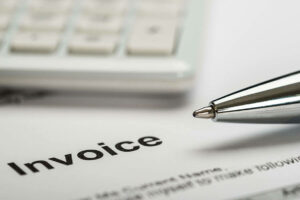The Paris Peace Conference: Who Were the Big Four?
Other delegates from these countries, and emissaries from nations affiliated with the Allies, held peripheral roles, while representatives from the Central Powers had little say in the shaping of the peace. In the end, the European Allies imposed harsh peace terms on Germany, forcing the nation to surrender around 10 percent of its territory and all of its overseas possessions. In conclusion, the “Big 4” in World War 1 consisted of Woodrow Wilson, David Lloyd George, Georges Clemenceau, and Vittorio Orlando.
Paris Peace Conference
- Although it was hoped that the conference would establish, and allow for, a lasting peace, this hope would be shattered with the advent of World War Two.
- The unresolved issues and harsh terms imposed on Germany contributed to the instability that would eventually lead to World War II.
- In early 1917 Berlin decided to launch all-out submarine warfare designed to sink American ships bringing supplies to Britain; in the Zimmermann Telegram it proposed a military alliance with Mexico to fight a war against the US.
- Georges Clemenceau sought to punish Germany and guarantee France’s security.
- Lloyd George, on the other hand, saw the rebuilding of Germany as a priority in order to reestablish the nation as a strong trading partner for Great Britain.
Clemenceau wanted to make sure that Germany would not be a threat to France in the future, and he was not persuaded by Wilson’s idealism. Lloyd George favoured creating a balance of powers but was adamant that big four ww1 Germany pay reparations. Were there any disagreements or conflicts among the Big 4? – Yes, there were disagreements and conflicts among the Big 4. Wilson’s proposals for a more lenient treatment of Germany clashed with the more punitive approaches of Clemenceau and Lloyd George.
Also absent was Russia, which had fought as one of the Allied powers until 1917, when, following the Russian Revolution, the country’s new Bolshevik government concluded a separate peace with Germany and withdrew from the conflict. The term Big Four Conference may refer to one of several conferences between heads of state or foreign ministers of the victorious nations after World War I (1914–18) or during and after World War II (1939–45). The Big Four, also known as the Council of Four, consisted of leaders from Italy, the United States, Britain and France who dominated decision making at the Paris Peace Conference.
Treaty of Versailles
In the east, Poland was resurrected, given most of formerly German West Prussia and Poznań (Posen), given a “corridor” to the Baltic Sea (which separated East Prussia from the rest of Germany), and given part of Upper Silesia after a plebiscite. All Germany’s overseas colonies in China, in the Pacific, and in Africa were taken over by Britain, France, Japan, and other Allied nations (see mandate). Woodrow Wilson to arrange a general armistice in October 1918, it declared that it accepted the Fourteen Points that he had formulated and presented to the U.S.
– The decisions made by the Big 4 had far-reaching consequences. The establishment of the League of Nations, for example, laid the foundation for the United Nations. Germany’s harsh treatment fueled resentment and contributed to the rise of Adolf Hitler and the outbreak of World War II. As an Ecotourism Specialist, I often find myself diving into different aspects of history to better understand the world we live in today. One pivotal event that shaped the course of the 20th century was World War 1.
The Big Four (World War I)
President Woodrow Wilson had outlined in his famous Fourteen Points in early 1918, the Treaty of Versailles humiliated Germany while failing to resolve the underlying issues that had led to war in the first place. Economic distress and seething resentment of the treaty within Germany helped fuel the rise of Adolf Hitler and his Nazi Party, as well as World War II. How did the Big 4 impact the future of international relations? – The decisions made by the Big 4 shaped the future of international relations by establishing new borders, redrawing maps, and setting the stage for future conflicts and tensions. The unresolved issues and harsh terms imposed on Germany contributed to the instability that would eventually lead to World War II. When the Armistice was signed on the 11th of November 1918, it was agreed that a Peace Conference would be held in Paris to settle affairs following the war.
He based his 1916 re-election campaign around the slogan “he kept us out of war”, and had worked hard to broker a compromise peace. In early 1917 Berlin decided to launch all-out submarine warfare designed to sink American ships bringing supplies to Britain; in the Zimmermann Telegram it proposed a military alliance with Mexico to fight a war against the US. The nation was poorly armed when it went to war in April 1917, but it had millions of potential fresh soldiers, billions of dollars, and huge supplies of raw materials needed by the Allies. Officially Wilson kept the US independent of the Allies. Succeeding Paul Painlevé as premier in November 1917, Clemenceau formed a coalition cabinet in which he was also minister of war.
The senseless 11th-hour slaughter captures the whole of WWI. With the onset of the Great Depression after 1929, economic unrest destabilized the already vulnerable Weimar Republic government in Germany, setting the stage for Nazi leader Adolf Hitler’s fateful rise to power in 1933. Lloyd George, on the other hand, saw the rebuilding of Germany as a priority in order to reestablish the nation as a strong trading partner for Great Britain. For his part, Orlando wanted to expand Italy’s influence and shape it into a major power that could hold its own alongside the other great nations. Aside from his prominent political role Orlando is also known for his writings, over a hundred works, on legal and judicial issues; Orlando was himself a professor of law.
Wilson opposed Italian territorial demands, as well as previously existing arrangements regarding territory between the other Allies; instead, he wanted to create a new world order along the lines of his Fourteen Points. The other leaders saw Wilson as too naive and idealistic, and his principles were difficult to translate into policy. Wilson also proposed the founding of a “general association of nations” that would mediate international disputes and foster cooperation between different nations in the hopes of preventing war on such a large scale in the future.
Who were the Big 4 in World War 1?
In this article, I will delve into the topic of the “Big 4” in World War 1 and explore the key players who held immense power during this global conflict. More soldiers died on the last day of WWI than on D-Day. Find out why Allied leaders found outrageous excuses to send 13,000 men to their deaths against a defeated enemy.
He renewed the dispirited morale of France, persuaded the allies to agree to a unified command, and pushed the war vigorously until the final victory. Leading the French delegation at the Paris Peace Conference, Clemenceau insisted on Germany’s disarmament and was never satisfied with the Versailles Treaty. Clemenceau was hoping that there would be more punishment put on Germany after they lost.





